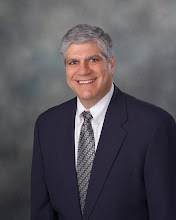Earlier this week, Treasury Secretary Tim Geithner appeared on ABC's "This Week." He said that he can't rule out higher taxes to help tame the budget deficit.
Geithner's comments just confirm what many of us have always assumed -- taxes will go up to pay for general deficit spending, as well as specific priorities like financing healthcare reform and extending jobless benefits.
If you're like most clients, you're wondering what this means for you. So it's worth taking a look at who really pays the taxes in our economy.
It's popular in some circles to say that "the rich" just need to pay their fair share. It's not hard to find examples of "the rich" skating without paying their fair share. But beyond those standouts, recent IRS data shows this just isn't the case.
Here's what IRS statistics reveal for 2007:
The top 0.1% of taxpayers - 141,000 households with adjusted gross incomes (AGIs) topping $2,155,365 - paid 11.9% of all federal income taxes. Their average tax rate was 21.5% - a figure that reflects preferential rates for dividends and capital gains.
The top 1% of taxpayers - 1,410,710 households with adjusted gross incomes (AGIs) of $410,096 or more - paid 40.4% of the federal government's income taxes. Their average tax rate was 22.45%.
The next 4% of taxpayers - 7,053,549 households with adjusted gross incomes of $160,041 through $410,095 - paid 20.2% of the federal government's income taxes. Their average tax rate was 17.52%.
Finally, the bottom 95% of taxpayers, with AGIs up to $160,040 - paid 39.6% of federal income taxes. Their average tax rate anged from 12.66% all the way down to 2.99% for the bottom 50%.
In other words, the top 1% of taxpayers paid more than the bottom 95% combined. This is the highest level in history - Back in 1987, the top 1% paid just 24.8 percent of income taxes.
Now that we know who pays the current taxes, who can we expect to pay new taxes?
The top earners obviously have more room to pay -- and the fact that the top 0.1% pays a lower average rate than the overall top 1% suggests that higher taxes on dividends and capital gains are likely. But even hiking those rates won't raise enough revenue to close trillion-dollar deficits or reform healthcare.
The real opportunity - at least as far as the IRS is concerned - lies in the top 5%. The Obama administration has already pledged to raise taxes on the portion of that group earning above $200,000. But it appears likely that taxes will have to go up for more than even just that group.
Even those of you who don't pay more will face more complicated taxes. Just look at the confusing collection of deductions and credits Washington has already enacted this year -- sales tax deductions for new cars (but only up to $49,500, and only if your AGI is under a certain amount), credits for first-time homebuyers (but only if you buy before December 1, and only if your AGI is below a certain, different limit), and enhanced tax breaks for energy-efficient home improvements (but how many know what those are or even how to find them).
If you own your own business or professional practice, proper tax planning has always been important. If your income is puts you in the top 5%, it's imperative. But even if you're not there yet, you'll appreciate us keeping our eyes out for you. As always, call with any specific questions or concerns.
Have you discussed the economy, taxes, or similar issues recently with friends, family, or business colleagues? Are they worried how they might cope with the same challenges we've just outlined here? If you trust us to help you navigate these waters, please give us the opportunity to help them with the same challenges. Your referrals make it possible for us to spend more of our time focused on protecting your interests.
Tuesday, August 4, 2009
Subscribe to:
Comments (Atom)

